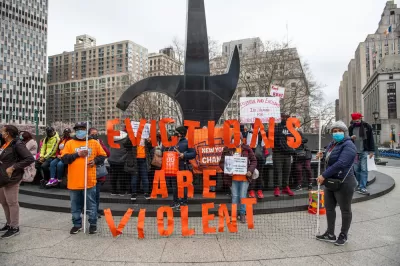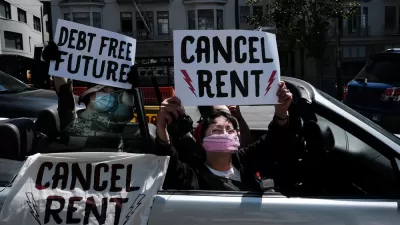With relatively few strings attached to the $350 billion in funds states and municipalities will receive, the door is wide open for governments to make a dent in their housing needs. But will they?

When President Joe Biden signed his $1.9 trillion coronavirus relief package into law in March, it came with significant funding to stanch the housing emergencies created by the pandemic. The American Rescue Plan Act (ARPA) has $21.5 billion for emergency rental assistance, $10 billion for mortgage relief, $5 billion for housing choice vouchers, $5 billion for homelessness services and shelter acquisition, $750 million for housing assistance for Native Americans and Native Hawaiians, and $100 million for rural housing assistance.
But it turns out that is only a fraction of the funding in ARPA that could be used for affordable housing.
The act contains more than $350 billion for states and local municipalities—a fairly open-ended pot of money that can be used to fund a huge swath of needs, such as development, social safety net, education, public health, and more. In mid-May, the U.S. Department of the Treasury published guidance for how states and cities can spend the billions coming their way, and it makes clear that affordable housing development, housing vouchers, housing counseling, and other programs are approved uses when spent in Census tracts with high concentrations of low-income residents or on people disproportionately impacted by the pandemic.
Preservation Working Group, a Pittsburgh coalition of housing advocates, developers, public health workers, and others, is lobbying Pennsylvania state officials to use ARPA funds for affordable housing and to bolster the participation of developers of color in the affordable housing industry. The coalition faces something of an uphill battle, with a ...
FULL STORY: Rescue Plan has Billions Available for Housing, Advocates Urge Officials to Take It

Study: Maui’s Plan to Convert Vacation Rentals to Long-Term Housing Could Cause Nearly $1 Billion Economic Loss
The plan would reduce visitor accommodation by 25,% resulting in 1,900 jobs lost.

Alabama: Trump Terminates Settlements for Black Communities Harmed By Raw Sewage
Trump deemed the landmark civil rights agreement “illegal DEI and environmental justice policy.”

Why Should We Subsidize Public Transportation?
Many public transit agencies face financial stress due to rising costs, declining fare revenue, and declining subsidies. Transit advocates must provide a strong business case for increasing public transit funding.

Paris Bike Boom Leads to Steep Drop in Air Pollution
The French city’s air quality has improved dramatically in the past 20 years, coinciding with a growth in cycling.

Why Housing Costs More to Build in California Than in Texas
Hard costs like labor and materials combined with ‘soft’ costs such as permitting make building in the San Francisco Bay Area almost three times as costly as in Texas cities.

San Diego County Sees a Rise in Urban Coyotes
San Diego County experiences a rise in urban coyotes, as sightings become prevalent throughout its urban neighbourhoods and surrounding areas.
Urban Design for Planners 1: Software Tools
This six-course series explores essential urban design concepts using open source software and equips planners with the tools they need to participate fully in the urban design process.
Planning for Universal Design
Learn the tools for implementing Universal Design in planning regulations.
Smith Gee Studio
Alamo Area Metropolitan Planning Organization
City of Santa Clarita
Institute for Housing and Urban Development Studies (IHS)
City of Grandview
Harvard GSD Executive Education
Toledo-Lucas County Plan Commissions
Salt Lake City
NYU Wagner Graduate School of Public Service





























